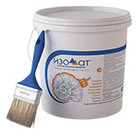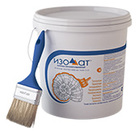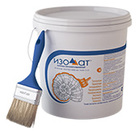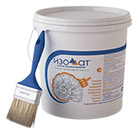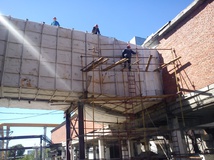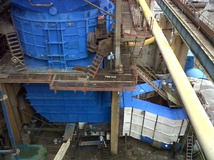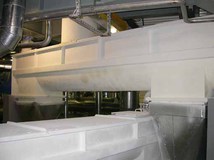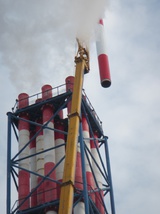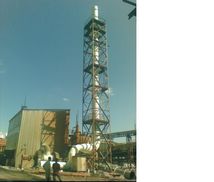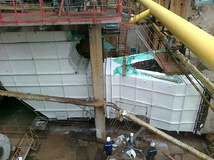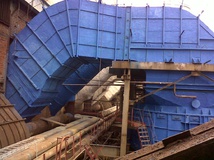Heat Insulation of Chimneys
Chimneys and flue gas ducts are an integral part of industrial and energy facilities. They operate in difficult conditions of temperature, pressure, humidity changes and exposure to aggressive flue gases. The main problem encountered in the operation of chimneys and flue gas ducts is condensation on the inner surface and concentration of reactive combustion products, which appear because internal temperature differs from outer temperature. This greatly reduces draft - air circulation - and leads to accelerated ageing of metal structures due to corrosion. The consequences of these become especially significant during necessary stoppages and downtime in winter, when condensation turns into ice.
Using traditional materials as thermal insulation of chimneys and flues is associated with the need for complex welding operations on fastening of supports and brackets on metal pipes. Installation of basalt wool or mullite boards requires full stop of production processes and involvement of qualified contractors. The structure itself needs external protective coating and using additional anti-corrosion materials. Moreover, not all traditional insulations are capable of withstanding high surface temperature (500 degrees or higher), resulting from operation of chimneys and flues.
An alternative material for thermal insulation of surface of chimneys and flues is Isollat liquid ceramic insulation. Thermal insulation work can be performed without stopping production and involving specialized contractors. Liquid consistency of the coating can effectively protect complex parts of structures. For surfaces with extremely high temperatures, high-temperature coating grade Isollat-04 is used, which is silicon-organic-based and can be successfully used both in simple and in combined forms: in combination with other insulation materials (Isollat-Effect coating).
The main advantages of the coating:
- ability to operate at high surface temperatures (can withstand temperatures up to 500 degrees);
- contains anti-corrosion additives;
- simplicity and high speed (manually or using a machine - high-performance airless spraying);
- insulation can be done without interrupting the process;
- additional protective coating is not needed;
- possible to use together with other insulating materials;
- it fits closely to the insulated surface;
- it lasts long - more than 10 years.

